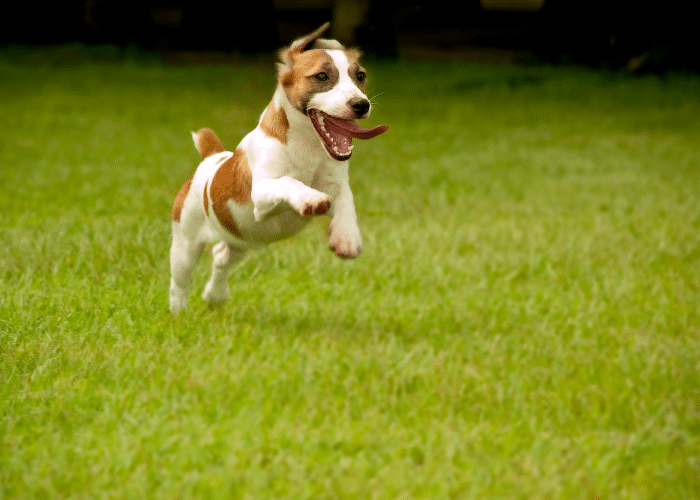Maintaining a lush, green lawn while ensuring it’s a safe environment for your pets can feel like a challenging balancing act, especially in the Houston and Gulf Coast climate. The intense heat, humidity, and occasional rainstorms can take a toll on your grass, while pet-friendly landscaping requires special considerations.
However, with a little planning and the right techniques, you can create a healthy, safe space for both your garden and your furry friends.
Here are essential tips for keeping your lawn in top shape while ensuring your pets remain safe and comfortable.
1. Opt for Pet-Safe Lawn Care Products
The first step in creating a pet-friendly lawn is ensuring the lawn care products you use are safe for your pets. Many common fertilizers, pesticides, and herbicides can be toxic to animals if ingested, and pets are often curious, especially when it comes to freshly treated grass.
Look for organic or pet-safe lawn care options that are free from harmful chemicals. Products labeled as “pet-friendly” or “non-toxic” are ideal. These alternatives are not only better for the environment but also protect your pets from accidental exposure to harmful substances. Furthermore, avoid using products that contain glyphosate, which is harmful to both pets and wildlife.
2. Create Shaded Spots for Rest and Play
Houston’s intense summer heat can quickly turn a lawn into a hot, uncomfortable space for pets. Dogs, in particular, need respite from the sun, and a lack of shade can cause overheating or dehydration, especially on hot pavement or dry grass. To keep your pets safe, make sure to include shaded areas in your yard.
Consider planting trees or installing pergolas, umbrellas, or fabric canopies. Additionally, placing pet-friendly outdoor furniture in shaded spots gives both you and your dog a place to relax while staying cool. With a little planning, you can transform your yard into a comfortable haven for your furry companions.
3. Use Safe Plants in Your Landscaping
Another important aspect of creating a pet-friendly lawn is choosing safe plants. Many popular ornamental plants are toxic to dogs, such as azaleas, lilies, and sago palms. Ensure that any plants you add to your landscape are safe for your pets, especially if they tend to chew on leaves or flowers.
Opt for pet-safe varieties like marigolds, sunflowers, and petunias, which can add color and beauty without posing a threat. If you’re unsure about the safety of certain plants, do some research or consult your veterinarian for recommendations. Protect your pet’s health by avoiding plants that could lead to poisoning or digestive issues.
4. Keep Your Pet’s Health in Mind with Proper Nutrition and Dental Care
Just as it’s important to care for your lawn, it’s equally essential to care for your pet’s health. Regular dental care plays a critical role in your dog’s overall well-being. Poor dental hygiene can lead to a variety of health problems, including gum disease, bad breath, and even digestive issues that can affect their comfort in the yard.
Incorporating daily dental care into your pet’s routine can significantly benefit their health. Some products, like dental chews and supplements, can help promote fresh breath and a healthy mouth. Pup Labs offers a range of dog dental health products designed to keep your pet’s teeth clean, gums healthy, and breath fresh. These products, developed with the help of veterinary experts, provide a convenient and easy way to maintain your pet’s oral hygiene without the hassle of traditional brushing.
5. Mind the Lawn Maintenance Schedule
Regular lawn maintenance is key to keeping your grass healthy, but it also helps maintain a safe environment for your pets. Keeping the grass trimmed to a safe length ensures that your pet doesn’t have to navigate through overgrown patches, which can hide pests like ticks, fleas, or even snakes. Regular mowing also prevents certain plants, like weeds, from taking over your yard and making it less comfortable for pets.
Be mindful of the time of day when you mow. Avoid mowing during the hottest parts of the day to prevent your pets from being exposed to hot, freshly cut grass. Instead, choose early morning or evening hours when the temperature is cooler and your pets can safely enjoy the yard afterward.
6. Prevent Lawn Burn from Pet Waste
Pet urine can cause unsightly yellow spots on your lawn, and while it’s a common problem for dog owners, it doesn’t mean you have to live with brown patches. To minimize lawn burn, encourage your pets to urinate in designated areas of the yard, such as a gravel or mulch section.
Another trick is to water the area immediately after your dog pees to dilute the urine and prevent it from harming the grass. If your dog consistently uses a specific spot, you can also install a dog-friendly potty area that helps maintain your lawn’s integrity while keeping things tidy and healthy.
7. Watch for Pests and Other Hazards
The Gulf Coast region is known for its warm and humid climate, which creates the perfect breeding ground for pests like mosquitoes, fleas, and ticks. These pests can be harmful to both you and your pets, so it’s important to be vigilant about pest control.
Use natural or pet-safe insect repellents to deter mosquitoes and ticks, and regularly inspect your pets for signs of flea or tick infestations. Be mindful of any areas in your lawn that may be harboring these pests, such as tall grasses or dense shrubbery. Consider incorporating pest-repelling plants like lavender, citronella, and marigolds into your garden to naturally deter insects.
8. Provide Fresh Water and Hydration
A healthy lawn needs water, but so does your pet. During the hotter months, it’s crucial to provide fresh water for your pets, especially if they’re spending a lot of time outdoors. Dehydration can lead to serious health problems, so make sure your pets always have access to clean, cool water in shaded areas of the yard.
Use pet-safe fountains or outdoor water stations to encourage your pets to stay hydrated while enjoying the outdoors. Remember to refill water bowls frequently, particularly on hot days, to ensure your pets always have access to fresh hydration.
Conclusion
By following these tips, you can create a beautiful, healthy lawn that’s also a safe and enjoyable space for your pets. With the right care, your garden can be a perfect environment for both your outdoor living and your pet’s health. Incorporating pet-friendly practices into your lawn care routine ensures that your pets stay safe while you maintain the beauty and health of your outdoor space.













